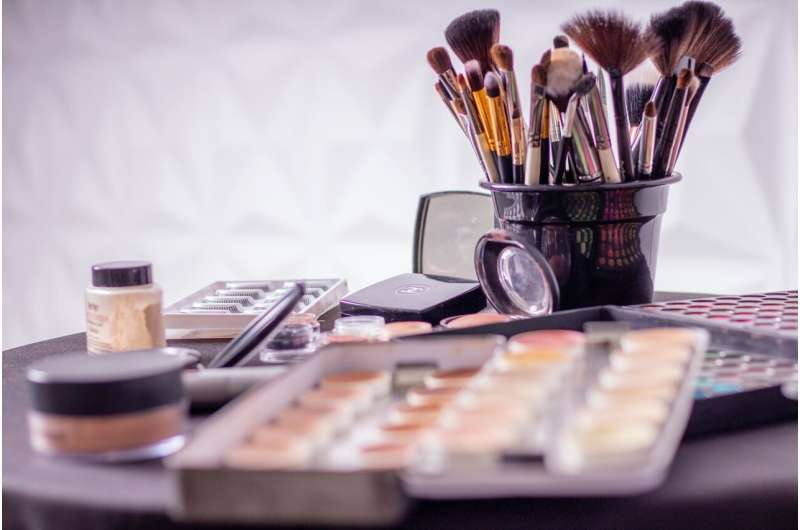
Makeup is one of the strategic tools for shaping one’s image. To what extent can its intensity and form vary depending on the occasion and context? When and why can it be used as camouflage? Researchers from SWPS University attempted to answer these questions by investigating how women apply makeup.
Creating one’s appearance is rooted in evolution, practiced by various cultures throughout history. We shape our image through specific clothing, makeup, hairstyles, tattoos, and even a tan. People are not the only beings that want to change their appearance depending on the situation. Similar modifications also occur in other animal species. For example, some birds apply substances collected from the soil to give the desired color to their feathers.
So far, the vast majority of scientific analyses of makeup have been limited to examining its everyday use, despite the fact that its intensity and form may vary depending on the situation.
Małgorzata Biesiadecka, Aleksandra Szymków and Wiesław Baryła from SWPS University decided to investigate how the amount of makeup and the method of its application would change depending on the context. They published the results in Evolutionary Psychology.
“This is basic research that explains how we behave and why. By delving into the psychological underpinnings of makeup use, we pave the way for a deeper comprehension of how women employ cosmetics to communicate and create social relationships,” explains Professor Szymków, an evolutionary psychologist at the SWPS University and head of the Center for Research on Biological Basis of Social Behavior.
“We can modify the appearance for various purposes. The goal may be to increase one’s attractiveness in social contacts, boost self-confidence in professional settings, or improve one’s public image. Sometimes makeup is an expression of support for an idea, and its lack is often also an expression of views and attitudes in life,” says Professor Szymków.
Makeup in the eye of a scientist
Applying makeup does not always have to be motivated by the desire to enhance attractiveness, sometimes—as some researchers have pointed out—it is a means to reduce it.
“When designing this study, we expected that women would refrain from improving their appearance in contexts that motivated them to avoid other people’s attention and hide,” the psychologist describes.
More than 900 women participated in two online surveys. Measurements included: the declared intensity of makeup, the number of cosmetic categories planned to be used and the level of diligence anticipated during makeup application. Each time, the situational context of applying makeup was taken into account. These contexts were: an everyday context, a party context, a party context where an attractive man is present (mating context), and a party context where a threatening man is present (threatening context).
Deliberate lack of makeup?
The study shows that, compared to the everyday, professional context, women intended to put on more intense makeup in a more diligent way in the party context, except for those in which they expected a potential threat from a man.
The study confirmed that the situational context significantly influenced women’s makeup application intentions. What changed the most—depending on the context—was the diligence of makeup application. Women intended to apply their makeup less diligently in the threatening context compared to the other situations. Importantly, it was the context-induced motivation to make (or not make) a good impression in specific circumstances that determined the intentions to apply stronger or less intense makeup.
“In certain situational contexts, a woman may want to blend in with the crowd, not emphasize her attractiveness, or even appear less attractive. Obviously, this would apply not only to makeup usage but to the wide array of appearance modifications that women use to create a specific impression,” the psychologist emphasizes.
“Sometimes makeup can help us shine and sometimes it can help us hide. We are particularly interested in the latter option, because there is virtually no research in this area, despite clear theoretical premises. In further steps, it is also necessary to assess the makeup women actually apply, and not only their declared intentions,” emphasizes Professor Szymków.
More information:
Malgorzata Biesiadecka et al, To Enhance, or not to Enhance: The Situational Context Shapes Women’s Intentions on Amount and Diligence of Makeup Application, Evolutionary Psychology (2023). DOI: 10.1177/14747049231219283
Provided by
SWPS University
Citation:
Art of makeup, art of camouflage: Investigating amount and application of makeup for various situational contexts (2024, July 30)
retrieved 30 July 2024
from https://phys.org/news/2024-07-art-makeup-camouflage-amount-application.html
This document is subject to copyright. Apart from any fair dealing for the purpose of private study or research, no
part may be reproduced without the written permission. The content is provided for information purposes only.
